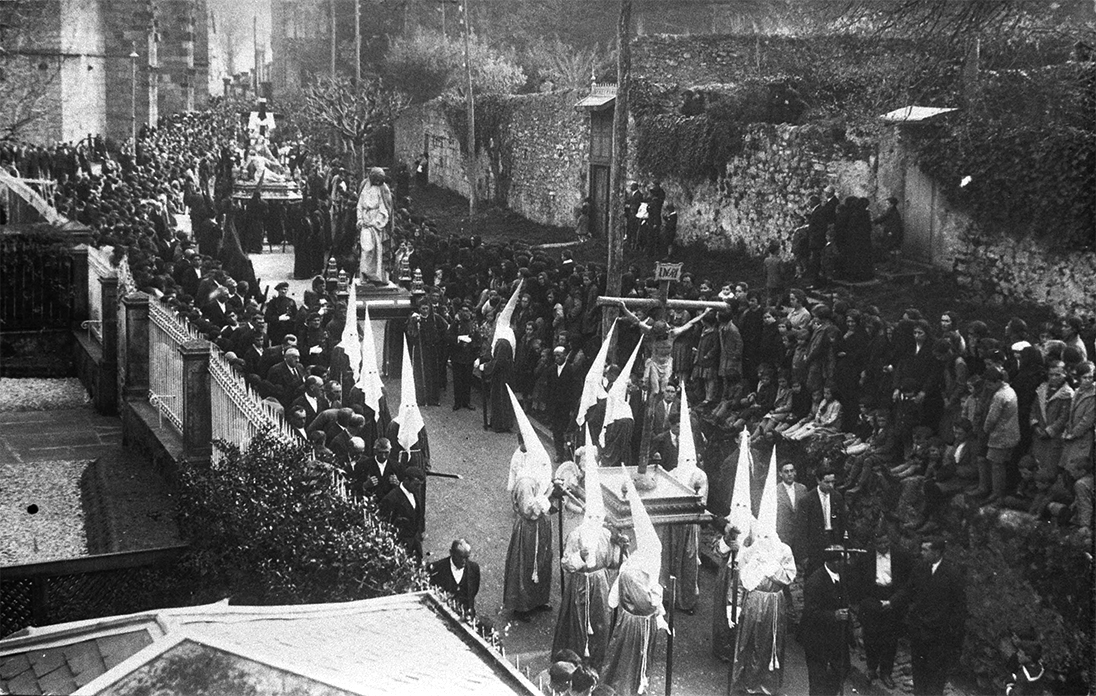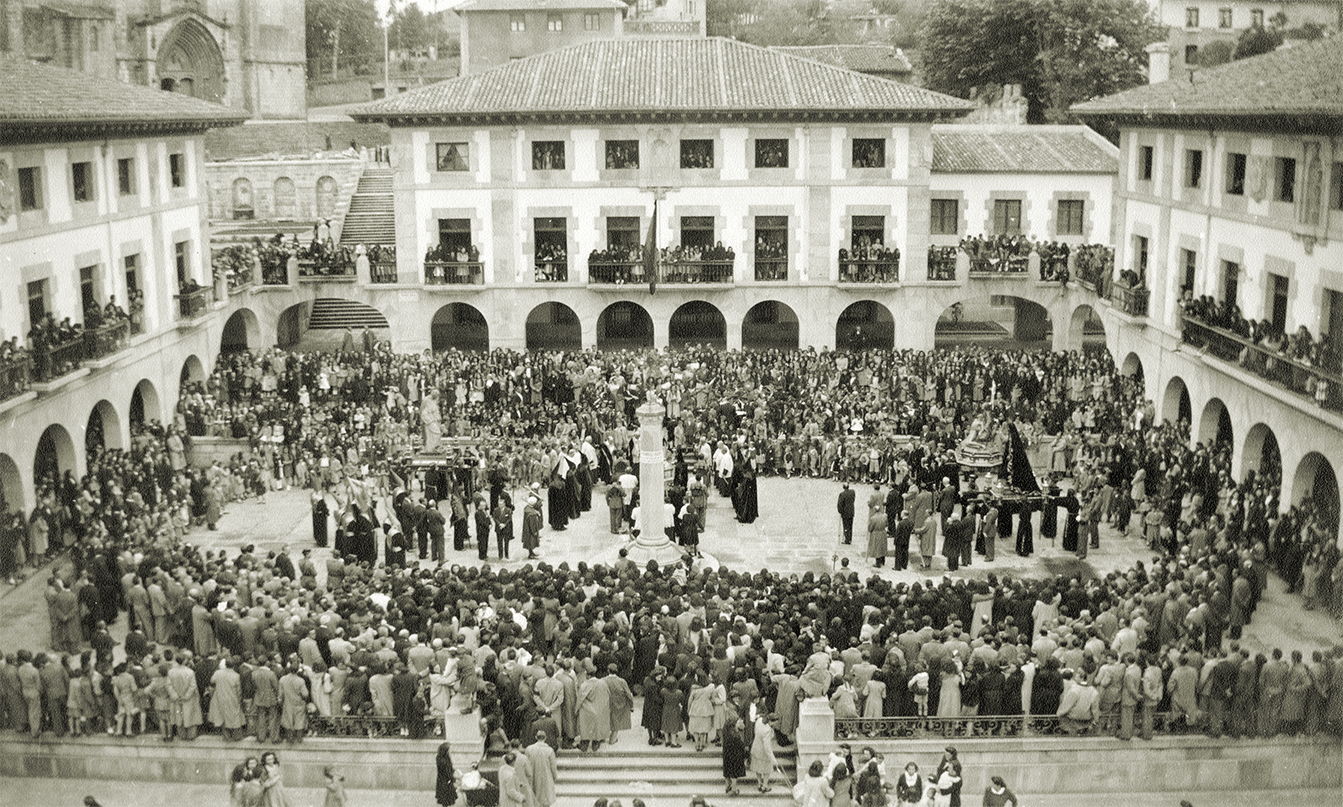Basque ethnography at a glance

Holy Week of 1929 in Gernika-Lumo (Bizkaia). Archive of the Gernikazarra History Group.
Both solemn religious observances in the Christian liturgical calendar, Lent precedes and prepares for Easter, a moveable feast celebrated on the first Sunday after the first full moon following the northern spring equinox.
The Lenten season begins on Ash Wednesday, immediately after Carnival, and commemorates the forty days of retreat and fasting which Jesus spent in the desert previous to his earthly ministry. Churchgoers, albeit far fewer than before, take advantage of this time to participate in spiritual practices at parish churches or spiritual centres.
Lent is traditionally described as a time of restraint, prayer and preparation for Easter celebrations. So much so that there was even a ban on dancing, and cinema events were limited to lower-profile religious, biblical, adventure… films. Typically, some of the most common forms of entertainment included religious theatre performances, such as El drama de Jesus [The Jesus drama] by the Jesuit José Julio Martínez, and sacred musical compositions, among them Bach’s St Matthew Passion, Verdi’s Requiem or Händel’s Messiah.
The Church prescribed fasting for Lent. Meat and animal-based products were forbidden on Fridays, homemade pea soups (chickpeas, white peas…) and fish, preferably salt fish, cooked in a variety of ways, being traditional favourites and popular seasonal choices.
Here follow some traditions observed in Gernika-Lumo (Bizkaia), corresponding variants of which are also applicable to many other places:
The nine days between Friday of Sorrows and Easter Sunday were imbued with sorrow to the point that all seemed to grind to a halt, religious ceremonies becoming longer and more tedious as Holy Week approached. On Friday of Sorrows, likewise known as Passion Week Friday, the image of Our Lady of Sorrows was carried in procession to Charters Square, where a reading in remembrance of the Virgin Mary under the title of Sermon on Our Lady of Solitude and the singing of the Miserere by the choir took place.
Palm Sunday, that is, the Sunday before Easter, was celebrated with the procession known as Kristo Asto Ganeko ‘Christ Riding a Donkey’, which replicates Jesus’ entry into Jerusalem. Little boys and girls wore new clothes on such a day, young men donned suits with long trousers for the first time, and young women began donning heeled shoes. As the saying goes, Quien no estrena el día de Ramos, no tiene pies ni manos ‘They who wear old clothes on Palm Sunday have no feet or hands’.

Encounter of the Risen Jesus with his Blessed Mother and Saint John. Gernika-Lumo (Bizkaia), 1946. Archive of the Gernikazarra History Group.
The Tenebrae service was another Holy Week ceremony, usually staged on Wednesday of Holy Week in the afternoon in the parish church, at which children rattled noisemakers to scare Judas Iscariot away for having betrayed Jesus in exchange for thirty pieces of silver.
Solemnly accompanied by the municipal music band, a priest visited the sick and housebound upon request in the morning of Holy Thursday and brought them communion. The consecrated bread was reserved in a closed tabernacle or pyx after the afternoon mass, and on the night the faithful were to adore the Holy Sacrament in churches across the city.
The Stations of the Cross were prayed early on Good Friday morning, beginning in the neighbourhood of Errenteria and finishing at St Mary’s Parish Church, followed by a second performance from there to neighbouring Lumo. After the afternoon service the Sermon of the Seven Last Words from the Cross was read.
Both on Holy Thursday and Good Friday several processions took to the streets of the city with floats depicting scenes from the Passion, whose care and transport local brotherhoods were in charge of. On Holy Saturday midnight mass was celebrated to announce the resurrection of Christ. The procession of the Encounter of the Risen Jesus with his Blessed Mother and Saint John at midday on Easter Sunday brought to an end all religious celebrations along with the rigour and austerity of Lent and Easter.
Segundo Oar-Arteta – Etniker Bizkaia – Etniker Euskalerria Groups
Translated by Jaione Bilbao – Ethnography Department – Labayru Fundazioa

